When it’s too Hot to Mow Your Lawn!
A healthy lawn provides you and your family with a green, lush and welcoming environment. However, when temperatures rise and the harsh summer sun beats down on your lawn, the ...

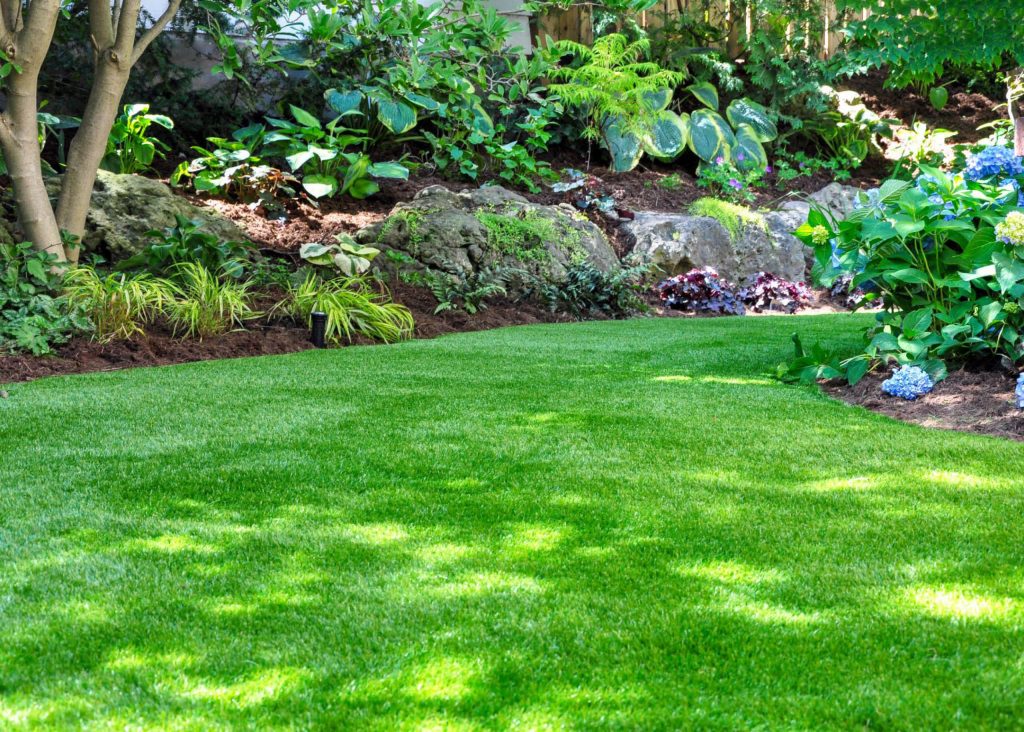 There’s nothing quite like a healthy green lawn for lifting the spirits.
There’s nothing quite like a healthy green lawn for lifting the spirits.
Indeed, research has found people who are more connected with nature, which includes parks and gardens as well as bushland, are usually happier in life.
So it’s no wonder keen gardeners do their utmost to keep their yards green and lush year round. But that can be tricky when you’re living in a big country like Australia, with its multiple climatic zones and extremes of weather that range from very hot to very cold and very wet to very dry.
Yellowing or browning is usually a sign that your lawn is not happy.
There might be one cause, or several, but this is the only way your lawn can let you know it needs help.
Read on for our tips for keeping a green lawn year round.
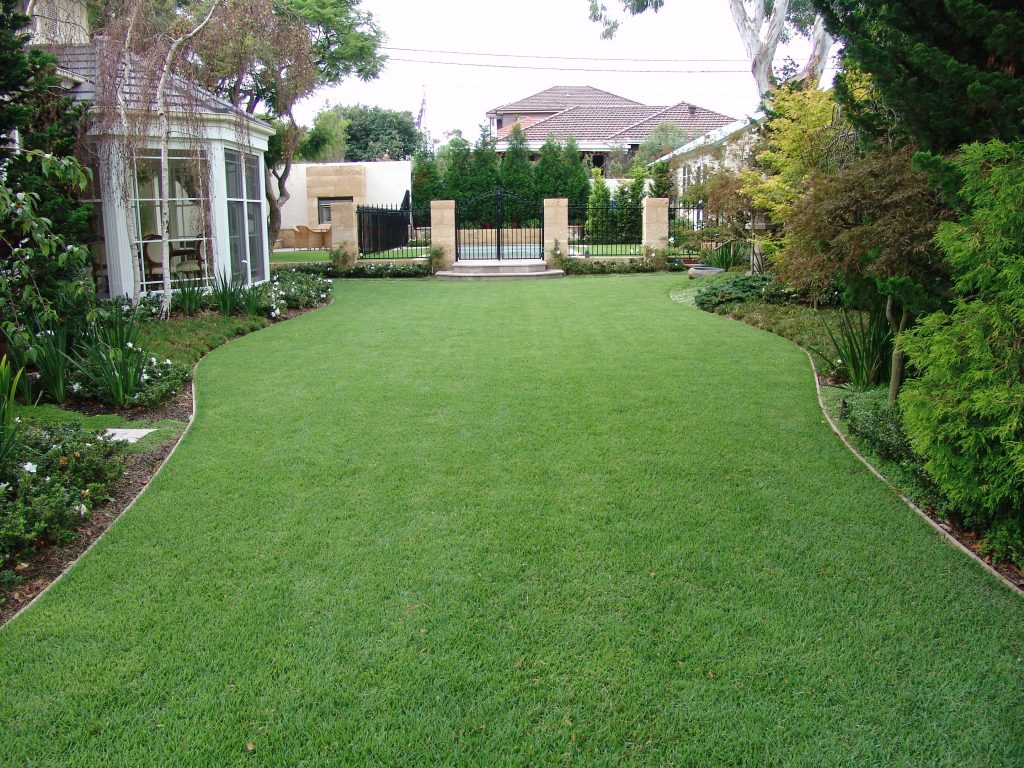 The first step to having a luscious green lawn is choosing the right type of grass for your location and aspect.
The first step to having a luscious green lawn is choosing the right type of grass for your location and aspect.
A grass that is better suited to full sun will suffer in shade and vice versa. One that is less hardy will quickly show the ill-effects of foot traffic and a drought tolerant turf type is better for areas where water restrictions are likely during summer.
Some grasses will keep their colour better in summer and others will stay greener in winter.
You can check which types of lawns would best suit your place in The Ultimate Turf Buyers Guide.
If you’ll be sharing your lawn with a dog or two, you might like to read our tips for choosing the Best Lawn for Your Dog.
Your lawn won’t thank you for watering it too much, not enough or at the wrong times.
Grass will always be at its healthiest and happiest when it’s watered just right.
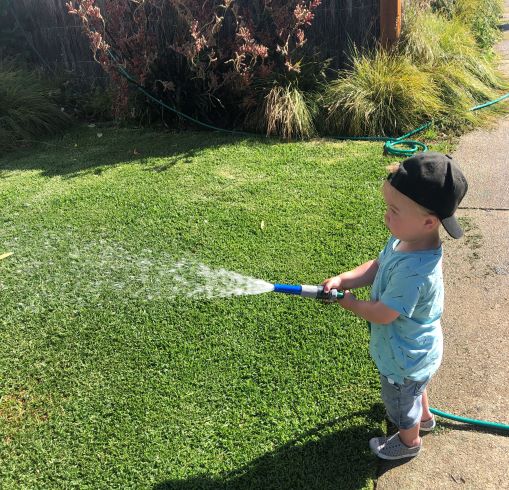 This means giving your lawn a good soaking once a week, or twice in summer, preferably in the early morning.
This means giving your lawn a good soaking once a week, or twice in summer, preferably in the early morning.
This has multiple benefits. It encourages strong root development, prevents losses from evaporation and allows the grass to dry before evening when prolonged moisture can cause the development of fungal diseases.
An established lawn will need about 25mm of water each week, from rain or irrigation.
Any more than that and the water will puddle on the surface or runoff into drains, taking with it topsoil and valuable nutrients that could have been used by your lawn.
If you’re using a sprinkler, move it to another spot or turn it off for 15-20 minutes to allow the water to soak in before turning it back on again.
Make sure you empty your hose after each use, to prevent water in it from heating up in the sun. If you don’t, your hose won’t last as long and you might accidentally damage or kill grass by watering it with hot water.
An automated irrigation system with a timer can be programmed to meet your lawn’s needs regardless of the season.
It’s also helpful for when you’re away or days when you’d prefer a sleep-in to getting up early just to do the watering.
And last but not least, don’t water when it’s raining. Fit a rain sensor to automatic systems or tap timers that will detect rain and delay watering until after it stops.
There’s more information about how best to water your lawn in our guide on Watering Your Lawn: the Dos and Don’ts.
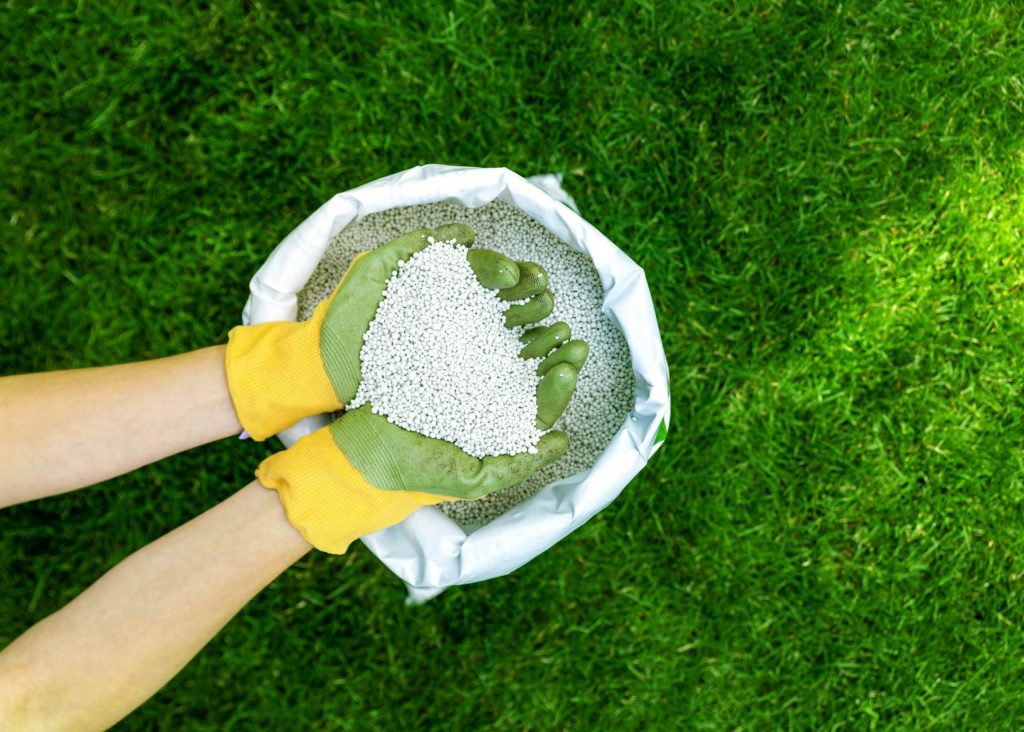 Regular application of slow-release fertiliser is needed to ensure your lawn stays well-fed and grows thickly, helping cool the soil and outcompete weeds.
Regular application of slow-release fertiliser is needed to ensure your lawn stays well-fed and grows thickly, helping cool the soil and outcompete weeds.
It can take about six to eight weeks for microbes in the soil to process fertiliser and make it available for plants to use.
If your lawn has gone dormant because of dry conditions, wait until it has revived from rain or watering and started growing again before applying more fertiliser.
There’s more information about how best to fertilise your lawn in The Concise Fertiliser Guide here.
Weeds will steal water and nutrients from your lawn and spoil its appearance, so tackle them when they’re small.
It might take up to 15 minutes every second day, depending on the size of your lawn, but pulling them out manually will save you a lot of time, energy and expense in the long run.
There’s more information about pulling weeds here.
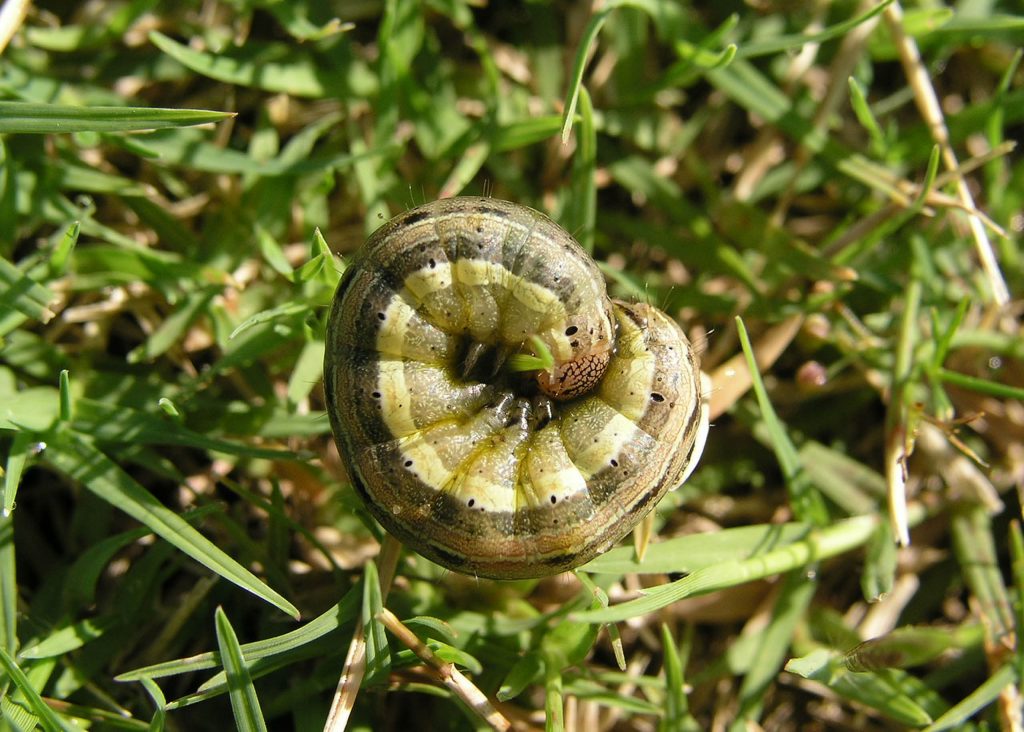 Pests are more likely to become problematic during warmer weather, when insects reproduce and their larvae attack the roots and shoots.
Pests are more likely to become problematic during warmer weather, when insects reproduce and their larvae attack the roots and shoots.
The same applies to fungal diseases which can flourish in warm, humid conditions. In both cases, watering and fertiliser application won’t be enough to fix the bare or brown patches they cause.
See our articles for more information on Controlling Lawn Pests and preventing or treating Common Lawn Diseases.
As well as water and nutrients, your lawn needs to be able to breathe. Heavy compacted soils are more prone to runoff, preventing water from reaching the root zone.
Aeration can improve soil texture and encourage your lawn to develop deep roots that produce stronger, healthier and greener grass.
It can be as simple as pushing a garden fork into your lawn at 150mm intervals across the grass once a year.
There’s a guide to the best times and a range of tools to use for aerating your lawn here.
Whether it’s caused by heavy traffic, pet urine, pests, diseases or a wading pool left in one spot for too long over summer, it is possible to repair most types of damage to your lawn.
Repairs are best done in spring or summer when your lawn is actively growing.
There’s more information about repairing patches and dead spots, uneven and hard lawns here.
Browse the myhomeTURF website for solutions to a range of lawn ailments, and bookmark our Ultimate Turf Maintenance and Lawn Care Guide for future reference.
You can also find a range of lawn care products from leading brands in the myhomeTURF online store.